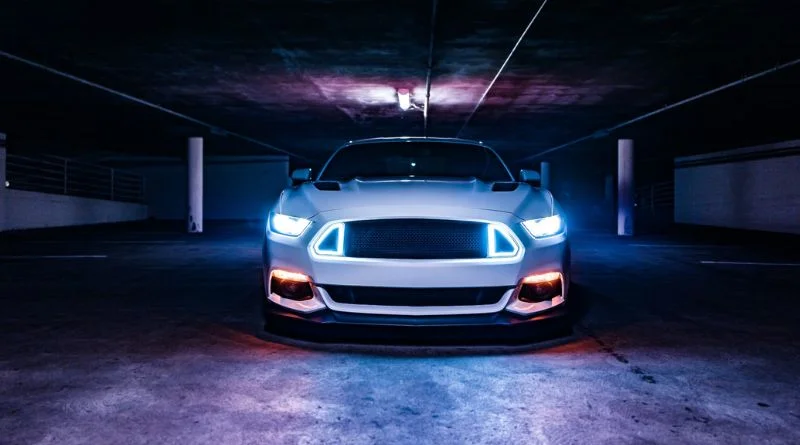How Long Do Led Headlights Last
With the automotive industry witnessing a notable shift towards LED headlights, these lighting solutions have gained prominence owing to their energy efficiency and superior performance. As the adoption of LED technology continues to grow among vehicle owners, it becomes imperative to delve into the intricacies of LED headlight lifespan.
This comprehensive guide aims to provide a nuanced exploration of the various aspects related to LED headlight longevity, offering insights into factors influencing their lifespan, average lifespans, signs of failure, methods for extending their lifespan, and a comparative analysis with other lighting technologies.
Factors Influencing LED Headlight Lifespan
As automotive technology continues to advance, LED headlights have become a popular choice for many drivers due to their energy efficiency and superior illumination. However, the longevity of LED headlights is not solely determined by their initial quality; several key factors significantly influence their lifespan.
Here are some important factors that impact the durability and performance of LED headlights:
Quality of LED Components:
LED Chip Quality:
- The durability and performance of LED headlights are intrinsically tied to the quality of the LED chips they employ. High-quality LED chips are designed to withstand prolonged usage and various environmental conditions.
- Manufacturers often use different grades of LED chips, with premium options offering better heat dissipation, color accuracy, and overall longevity.
Heat Management Systems:
- Efficient heat dissipation is paramount for the prolonged life of LED headlights. Heat can degrade LED components over time, affecting their performance and reliability.
- High-quality LED headlights incorporate advanced heat management systems, such as heat sinks and fans, to dissipate excess heat and maintain optimal operating temperatures. This prevents premature degradation and extends the overall lifespan of the headlights.
Usage Patterns:
Daily Driving Habits:
- The frequency and duration of usage play a crucial role in determining LED headlight lifespan. Headlights used for extended periods, especially during nighttime driving or in regions with limited daylight, may experience more rapid wear.
- Consistent use of high beams, which generates additional heat, can also contribute to a shorter lifespan. Awareness of usage patterns allows users to anticipate maintenance needs and plan replacements accordingly.
Environmental Conditions:
- LED headlights are exposed to a range of environmental factors, including temperature extremes, humidity, and road debris. Harsh weather conditions, such as extreme heat or cold, can impact the performance of LED components.
- Proper sealing and robust construction help protect LED headlights from environmental elements. Understanding how environmental conditions affect LED lifespan enables users to take preventive measures and choose headlights suited for specific climates.
Average Lifespan of LED Headlights
With proper care, LED headlights can illuminate your path for a staggering 25,000 to 30,000 hours. That translates to roughly 5 to 6 years of worry-free driving, even if you’re a nocturnal wanderer. Compare that to the measly 1,000 to 2,000 hours of halogen bulbs, and it’s clear why LEDs are the reigning royalty of headlight technology.
Signs of LED Headlight Failure
Recognizing signs of potential LED headlight failure is crucial for vehicle owners to proactively address issues, ensuring continued reliability and optimal performance. Here are common indicators of LED headlight failure:
Dimming or Flickering
- Voltage Fluctuations: Sudden changes in voltage can lead to flickering, causing inconsistencies in light output.
- Poor Electrical Connections: Loose or damaged wiring may result in intermittent connections, leading to flickering or dimming.
- Internal Issues with LED Driver: The LED driver, responsible for regulating power to the LED, may experience malfunctions, affecting overall light stability.
Color Temperature Changes
- Shifts in Color Temperature Affect Perception: Changes in color temperature can influence how road conditions are perceived, impacting overall visibility.
- Inconsistent Lighting May Compromise Safety: Variations in color temperature may compromise uniform lighting, affecting safety during nighttime driving.
Causes:
- Deterioration of LED Phosphor Coating: Over time, the phosphor coating on LED chips may degrade, altering the emitted light’s color.
- Overheating Issues: Excessive heat can affect the internal components, leading to color temperature shifts.
Complete Failure
- Burned-out LED Chips: Over time, individual LED chips may fail, resulting in reduced or complete loss of light output.
- Malfunctioning LED Driver: A malfunctioning driver can prevent the LED chips from receiving the necessary power, leading to complete failure.
- Overheating and Subsequent Component Damage: Prolonged exposure to high temperatures can damage internal components, resulting in complete failure.
Extending the Lifespan of LED Headlights
Ensuring that your LED headlights shine brightly for an extended period involves a combination of mindful practices and strategic choices. By adopting a proactive approach, you can significantly increase the durability and performance of your LED headlights. Here’s a detailed look at the steps you can take to extend the lifespan of your LED headlights:
1. Proper Installation
The foundation for a long-lasting LED headlight experience begins with correct installation. Avoiding common installation mistakes, such as incorrect wiring or insecure mounting, is crucial. Following the manufacturer’s installation guidelines meticulously ensures that the headlights are set up to operate optimally.
2. Regular Maintenance
Routine maintenance plays a pivotal role in preserving the health of your LED headlights. Regularly inspecting and cleaning the headlights helps prevent dust and debris from accumulating, which could potentially impact their performance. A quick wipe and occasional check can go a long way in maintaining clarity and brightness.
3. Upgrading Heat Dissipation
Overheating is one of the primary factors that can affect LED headlight lifespan. Investing in aftermarket heat dissipation solutions can help manage and reduce excess heat. These solutions may include upgraded cooling fans or heat sinks designed to enhance the headlight’s ability to handle high temperatures effectively.
4. Adherence to Manufacturer Guidelines
Manufacturers provide specific guidelines regarding the usage and operational conditions for LED headlights. Adhering to these recommendations, such as avoiding continuous operation in extreme temperatures or under heavy load, ensures that the headlights operate within their designed parameters. This, in turn, contributes to a longer lifespan.
5. Avoid Overuse
LED headlights, like any electronic component, have a finite lifespan. Avoiding unnecessary usage or keeping the headlights on when not needed can help conserve their lifespan. Turning off headlights when the vehicle is stationary or not in use reduces the overall operational hours, contributing to a longer service life.
Conclusion
In conclusion, this guide serves as a comprehensive resource for individuals seeking to unravel the intricacies of LED headlight lifespan.
By exploring the factors influencing their longevity, average lifespans, signs of failure, methods for extension, and a comparative analysis with other lighting technologies, consumers can make informed decisions that ensure optimal performance and durability of LED headlights.
As technology continues to evolve, staying informed about these aspects becomes paramount for current and prospective vehicle owners alike. You can check or contact Carifex for more details on this.




